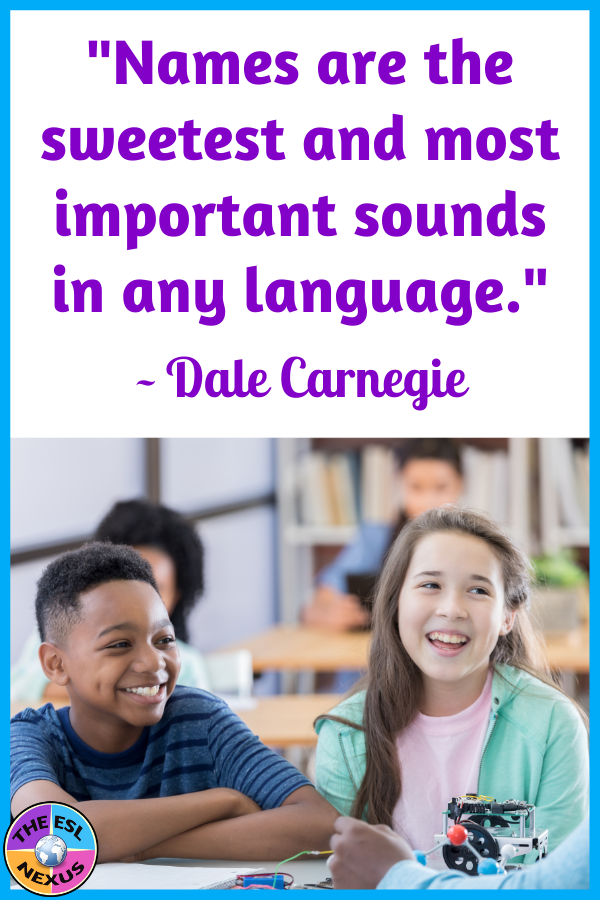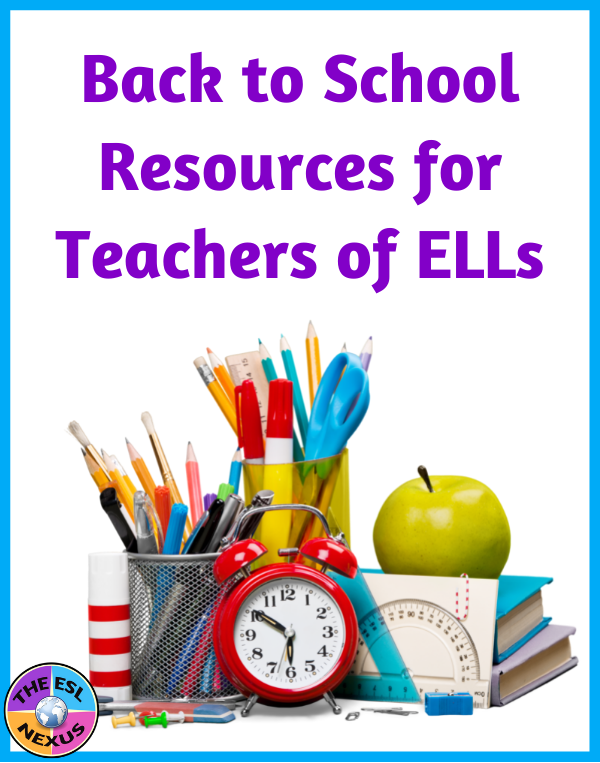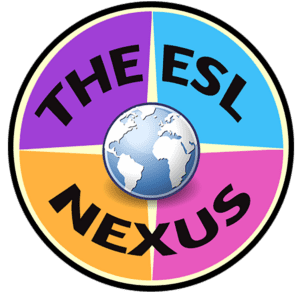(This post was updated August 12, 2024)
Now that school has been in session for at least a few weeks in the US, you or your colleagues may have some questions about working with the English Language Learners in your classrooms. It can certainly be daunting to face students who are not yet proficient in English and may struggle to understand everything you are teaching, even if have had training in how to teach ELLs effectively and have had ELLs in your classes in the past.
But don’t worry! There are many things you can do to make your ELLs feel a part of your class and that help them comprehend your lessons. A blog post I wrote a few years ago has lots of information about what to do if your ELLs aren’t doing as well as you think they should.
Why Pronouncing Names is Important
One thing not mentioned in my other blog post is the importance of names. Years ago, some teachers often gave their students nicknames, or shortened students’ names to make them easier to pronounce, or used Anglicized versions instead of trying to pronounce students’ real names correctly. This is no longer accepted practice because it’s seen as devaluing students, instead of trying to make them feel welcome, by using names that are convenient for the teacher but may not accurately represent the students’ identities. The social-emotional well-being of students is much more in the forefront nowadays, especially considering the impact of the coronavirus pandemic.
 |
| Source: The ESL Nexus |
It’s really not that hard to learn how to pronounce names properly. One method I saw recommended somewhere (I forget where so unfortunately I can’t give credit) is to ask every student to make a quick video of themselves pronouncing their name. use whatever tech tool you plan on using throughout the year, to give students practice with it. You can then watch their videos anytime to learn how to say their names correctly. Even if it’s already been a few weeks since the start of your school year, you can do this as a way of introducing a technology tool to your students.
Free Helpful Resources for Teaching ELLs at the Beginning of the Year
Here are 5 more helpful resources for the beginning of the new school year and even beyond. All are free!
 |
| Source: The ESL Nexus |
* Colorín Colorado article about welcoming ELLs to the classroom
This short article includes lots of links to resources plus videos.
* U.S. Department of Education’s Newcomer Tool Kit
Includes info about who newcomers are and how to design programs for them; it’s 161 pages long but the table of contents has live links so you can go directly to the sections that interest you and skip the others.
* Aperture Education’s Social & Emotional Blog Posts
This webpage has blog posts with useful ideas, activities, and lesson plans on how to nurture your students, their families, fellow educators, and yourself throughout the school year.
* First Book Accelerator’s Printable 2024 – 2025 Printable School Year Calendar
This diversity calendar shows holidays, historical and cultural events, religious holidays, and more.
* U.S. Department of Justice & U.S. Department of Education’s Ensuring English Learner Students Can Participate Meaningfully and Equally in Educational Programs
This 4-page document provides an overview of schools’ responsibilities for educating ELLs; it’s a helpful resource for your administrators or colleagues who many not be familiar with what schools need to do to provide an equitable education to their ELL students.
I have several resources for the beginning of the new school year in my TpT store. Head on over there and take a look around! And best wishes for a great school year!




